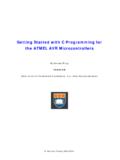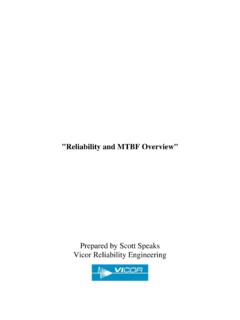Transcription of VOLTAGE FLUCTUATIONS IN THE ELECTRIC SUPPLY …
1 Technical Note No. 7 August 2003 VOLTAGE FLUCTUATIONS IN THE ELECTRIC SUPPLY SYSTEM This Technical Note discusses VOLTAGE FLUCTUATIONS , their causes and adverse effects, what levels are acceptable and how to reduce their consequences. Integral Energy, your local Network Operator or the Integral Energy power quality Centre can give you additional advice if you have particular concerns with these issues. Summary VOLTAGE FLUCTUATIONS are defined as repetitive or random variations in the magnitude of the SUPPLY VOLTAGE .
2 The magnitudes of these variations do not usually exceed 10% of the nominal SUPPLY VOLTAGE . However, small magnitude changes occurring at particular frequencies can give rise to an effect called lamp flicker. This term is used to describe the impression of unsteadiness of visual sensation induced by a light source whose luminance or spectral distribution fluctuates with time [1]. Flicker is essentially a measure of how annoying the fluctuation in luminance is to the human eye. Standards limit the magnitudes of starting currents and load FLUCTUATIONS of equipment to control the level of VOLTAGE FLUCTUATIONS .
3 Where the levels of indices specified in the standards are exceeded, mitigation techniques to reduce the effects of VOLTAGE FLUCTUATIONS are required. Contents 1. What are VOLTAGE FLUCTUATIONS ? 2. Effects of VOLTAGE FLUCTUATIONS 3. Causes of VOLTAGE FLUCTUATIONS 4. Calculation of the flicker indices 5. VOLTAGE fluctuation standards and planning levels 6. Reducing the effects of VOLTAGE FLUCTUATIONS 7. References and additional reading 8. Integral Energy power quality Centre power quality Centre 1 power quality Centre 1.
4 What are VOLTAGE FLUCTUATIONS ? 2. Effects of VOLTAGE FLUCTUATIONS VOLTAGE FLUCTUATIONS can be described as repetitive or random variations of the VOLTAGE envelope due to sudden changes in the real and reactive power drawn by a load. The characteristics of VOLTAGE FLUCTUATIONS depend on the load type and size and the power system capacity. Figure 1 illustrates an example of a fluctuating VOLTAGE waveform. The VOLTAGE waveform exhibits variations in magnitude due to the fluctuating nature or intermittent operation of connected loads.
5 The frequency of the VOLTAGE envelope is often referred to as the flicker frequency. Thus there are two important parameters to VOLTAGE FLUCTUATIONS , the frequency of fluctuation and the magnitude of fluctuation . Both of these components are significant in the adverse effects of VOLTAGE FLUCTUATIONS . VOLTAGE envelope Magnitude Time VOLTAGE waveform Figure 1 Terminal VOLTAGE waveform of fluctuating load In Figure 1 the VOLTAGE changes are illustrated as being modulated in a sinusoidal manner.
6 However, the changes in VOLTAGE may also be rectangular or irregular in shape. The profile of the VOLTAGE changes will depend on the current drawn by the offending fluctuating load. Typically, VOLTAGE changes caused by an offending load will not be isolated to a single customer and will propagate in an attenuated form both upstream and downstream from the offending load throughout the distribution system, possibly affecting many customers. The foremost effect of VOLTAGE FLUCTUATIONS is lamp flicker.
7 Lamp flicker occurs when the intensity of the light from a lamp varies due to changes in the magnitude of the SUPPLY VOLTAGE . This changing intensity can create annoyance to the human eye. Susceptibility to irritation from lamp flicker will be different for each individual. However, tests have shown that generally the human eye is most sensitive to VOLTAGE waveform modulation around a frequency of 6-8Hz. The perceptibility of flicker is quantified using a measure called the short-term flicker index, Pst, which is normalised to to represent the conventional threshold of irritability.
8 The perceptibility of flicker, a measure of the potential for annoyance, can be plotted on a curve of the change in relative VOLTAGE magnitude versus the frequency of the VOLTAGE changes. Figure 2 illustrates the approximate human eye perceptibility with regard to rectangularly modulated flicker noting that around the 6-8Hz region FLUCTUATIONS as small as are regarded as perceptible as changes of larger magnitudes at much lower frequencies [1]. Figure 2 is often referred to as the flicker curve and represents a Pstvalue of for various frequencies of rectangular VOLTAGE FLUCTUATIONS .
9 Although regular rectangular VOLTAGE variations are uncommon in practice they provide the basis for the flicker curve, defining the threshold of 2 power quality Centre 3. Causes of VOLTAGE FLUCTUATIONS irritability for the average observer. It is worth noting that the flicker curve is based on measurements completed using a 60W incandescent light bulb. This is used as a benchmark measurement, however the perceptibility of lamp flicker will vary depending on the size and type of lamp used.
10 Figure 2 Flicker curve for rectangular modulation frequencies [1] VOLTAGE FLUCTUATIONS on the public low VOLTAGE power system are required to be within accepted tolerances specified in the standards. In general the acceptable region of VOLTAGE FLUCTUATIONS falls below the flicker curve illustrated in Figure 2. VOLTAGE FLUCTUATIONS may also cause spurious tripping of relays; interfere with communication equipment; and trip out electronic equipment. Severe FLUCTUATIONS in some cases may not allow other loads to be started due to the reduction in the SUPPLY VOLTAGE .









